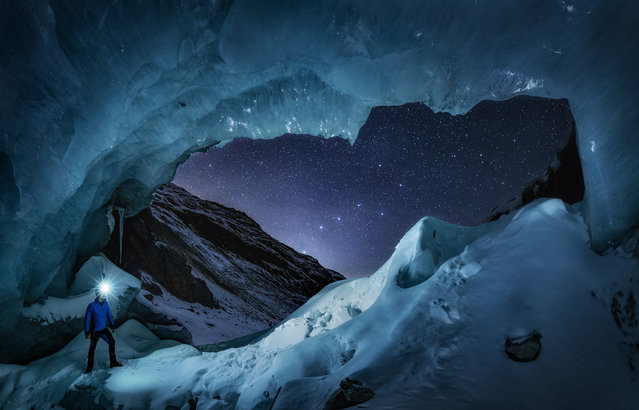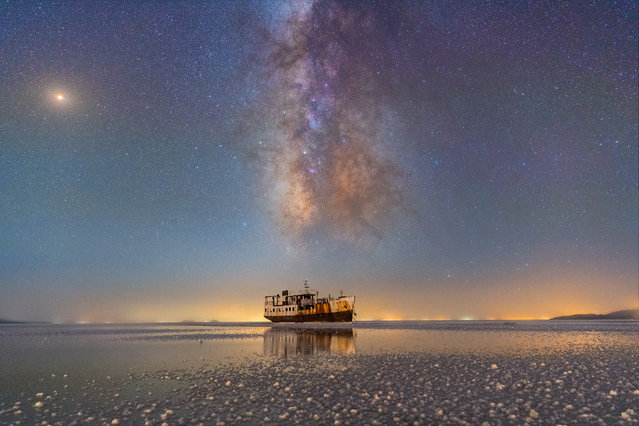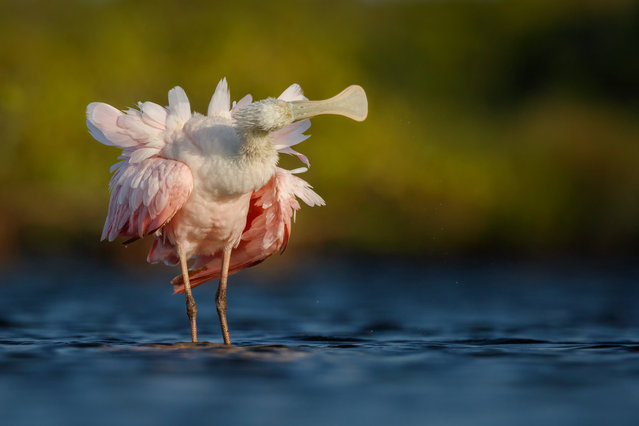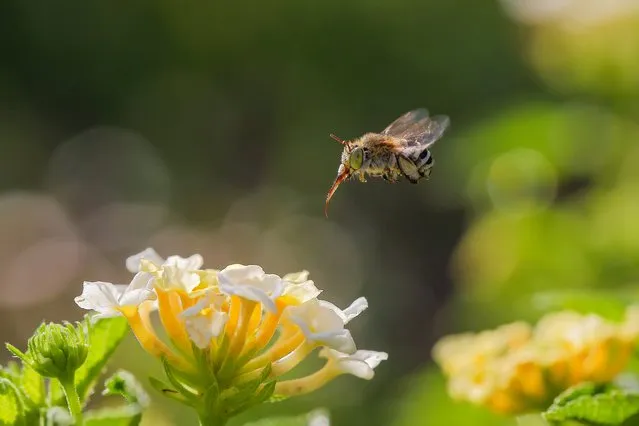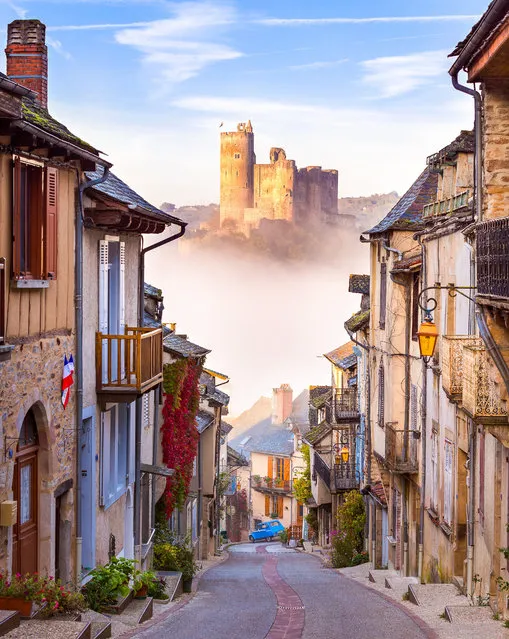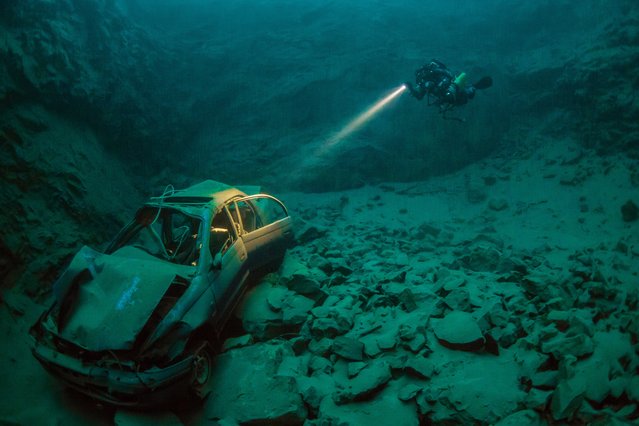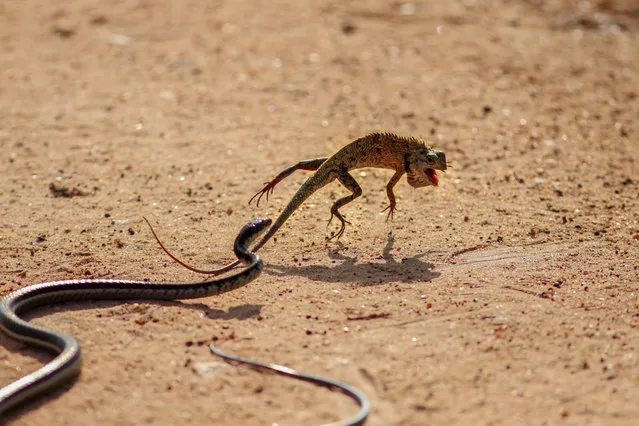
Yala national park, Sri Lanka. Category: Action. “The daylight was fading and I was scanning the bush for a leopard. Then, I saw this garden lizard and a common bronzeback snake in the road. When the snake struck, the lizard performed amazing acrobatics to avoid it. The snake didn’t enjoy the extra attention from the crowd of jeeps. The distraction gave the lizard the chance to live another day”. (Photo by Sajith Buddikha Withanage/National Geographic Traveller UK)
25 Jan 2017 11:26:00,post received
0 comments

